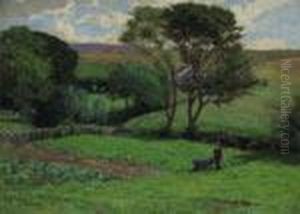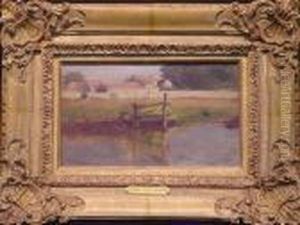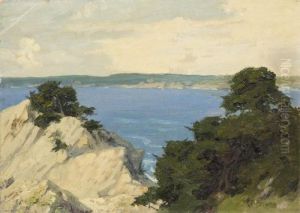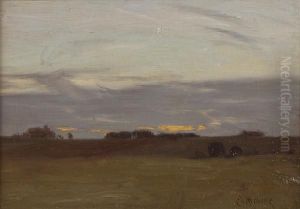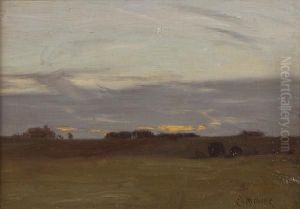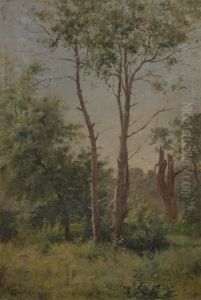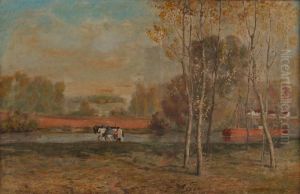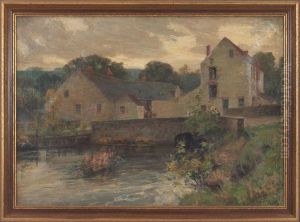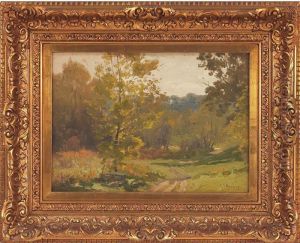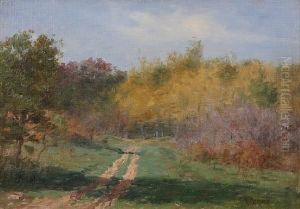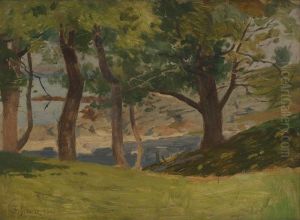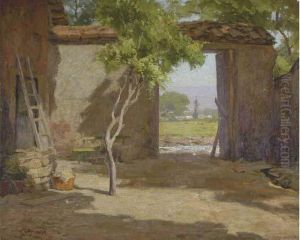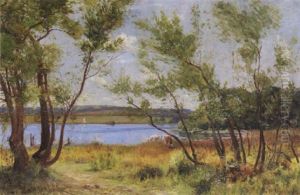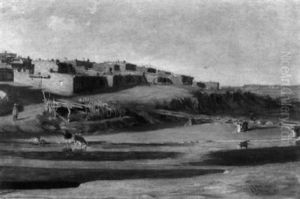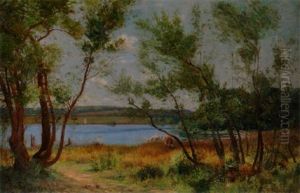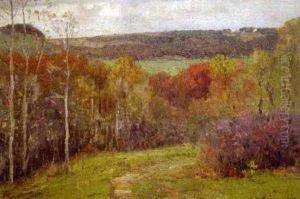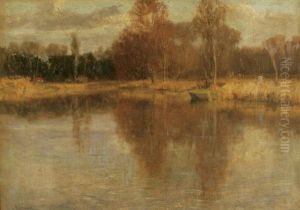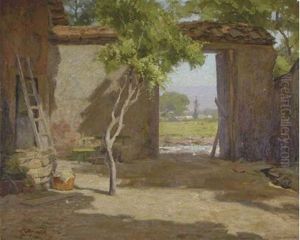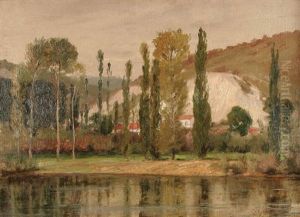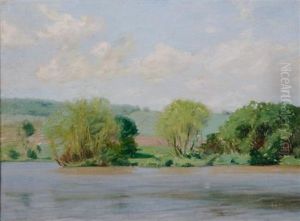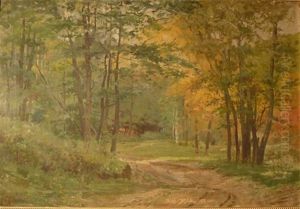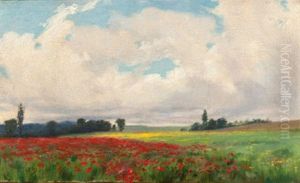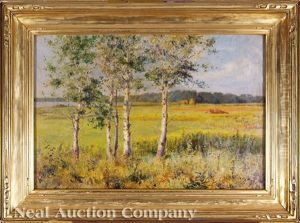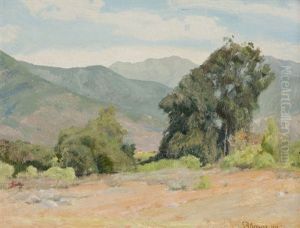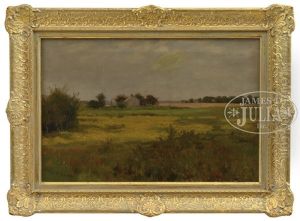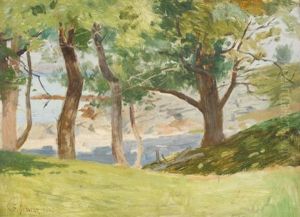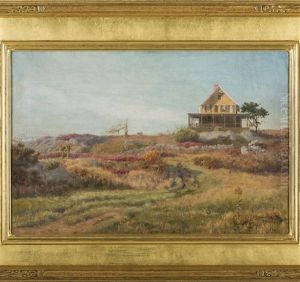Charles Francis Browne Paintings
Charles Francis Browne was an American landscape painter, born in Natick, Massachusetts, in 1859. He demonstrated an early interest in art, which led him to pursue a career in painting. Browne's education in art began earnestly when he attended the School of the Art Institute of Chicago, a significant center for art education in the United States during the late 19th and early 20th centuries. His education continued in Paris, where he studied at the prestigious Académie Julian under the tutelage of William-Adolphe Bouguereau and Tony Robert-Fleury. This period in France profoundly influenced his style and the development of his approach to landscape painting.
After returning to the United States, Browne became a key figure in the Chicago art scene. He was one of the founding members of the Eagle's Nest Art Colony in Oregon, Illinois, which was established as a creative retreat for artists, writers, and musicians. This environment played a significant role in Browne's work, as it provided him with a rich landscape to explore and paint. His works during this period were characterized by a keen observation of nature and a dedication to portraying the American landscape with a sense of authenticity and emotional depth.
Browne's style evolved over the years, showing influences from the Barbizon School and the Impressionists, which he encountered during his studies in France. However, he gradually developed his own distinctive style that emphasized the mood and atmosphere of the landscape, often focusing on the Midwestern scenes that surrounded him.
Throughout his career, Charles Francis Browne contributed significantly to the American art scene. He was actively involved in the Chicago Society of Artists and served as its president for a time. Browne's commitment to art education also led him to teach at the School of the Art Institute of Chicago, where he influenced a new generation of artists.
Browne's work has been exhibited in various prestigious institutions, including the Art Institute of Chicago and the Pennsylvania Academy of the Fine Arts. His legacy is remembered for his contributions to the American landscape painting tradition and his role in the cultural life of Chicago. Charles Francis Browne passed away in 1920, leaving behind a body of work that continues to be appreciated for its portrayal of the American landscape and its influence on the artists who followed him.
